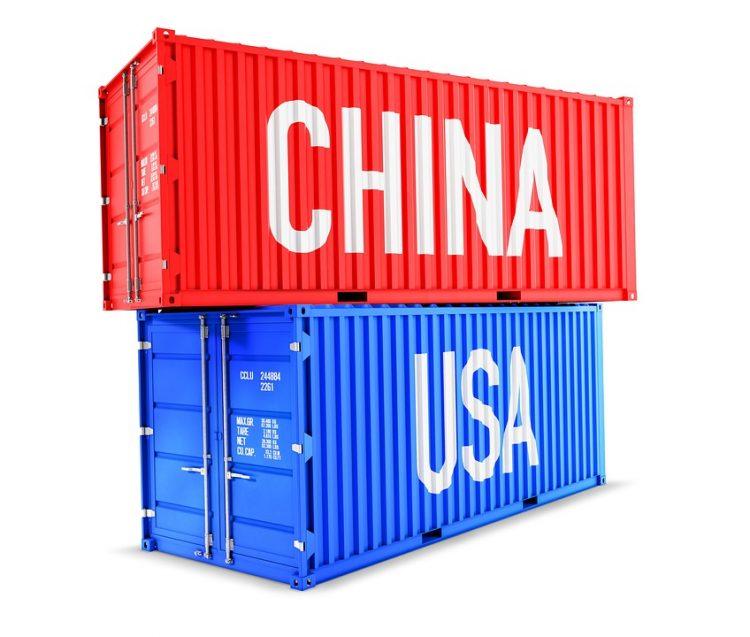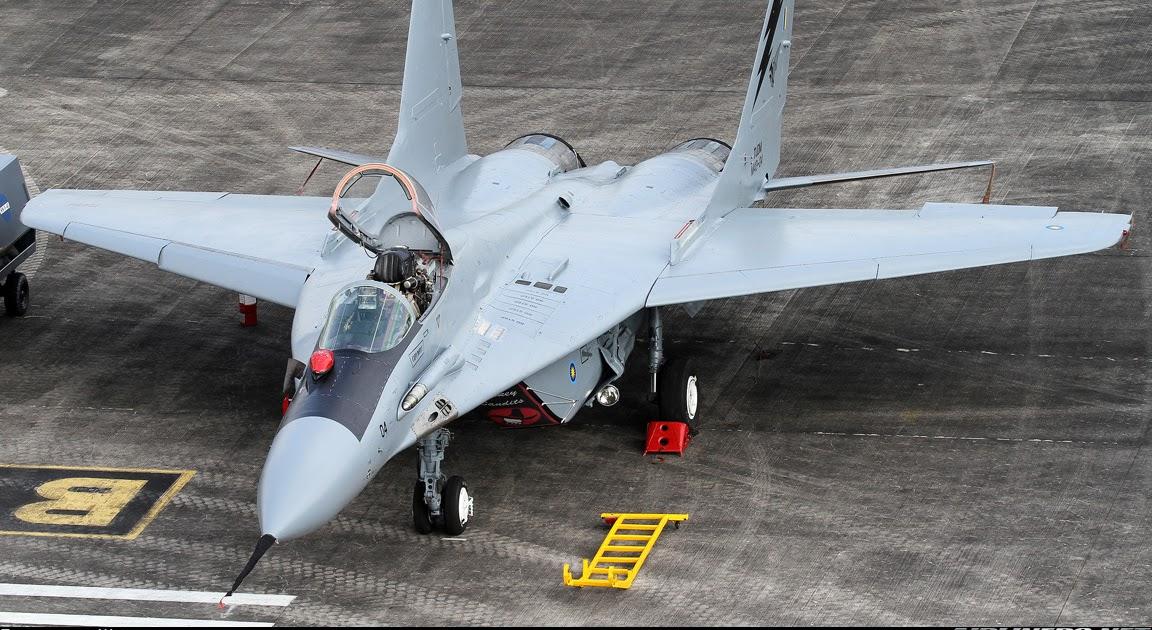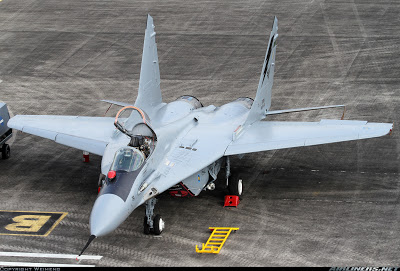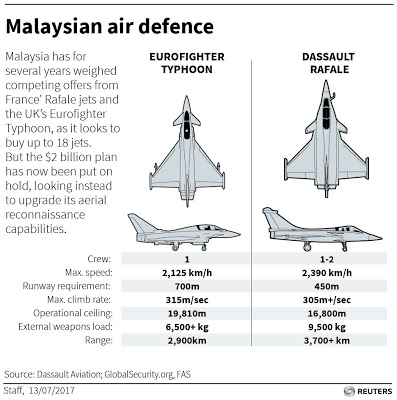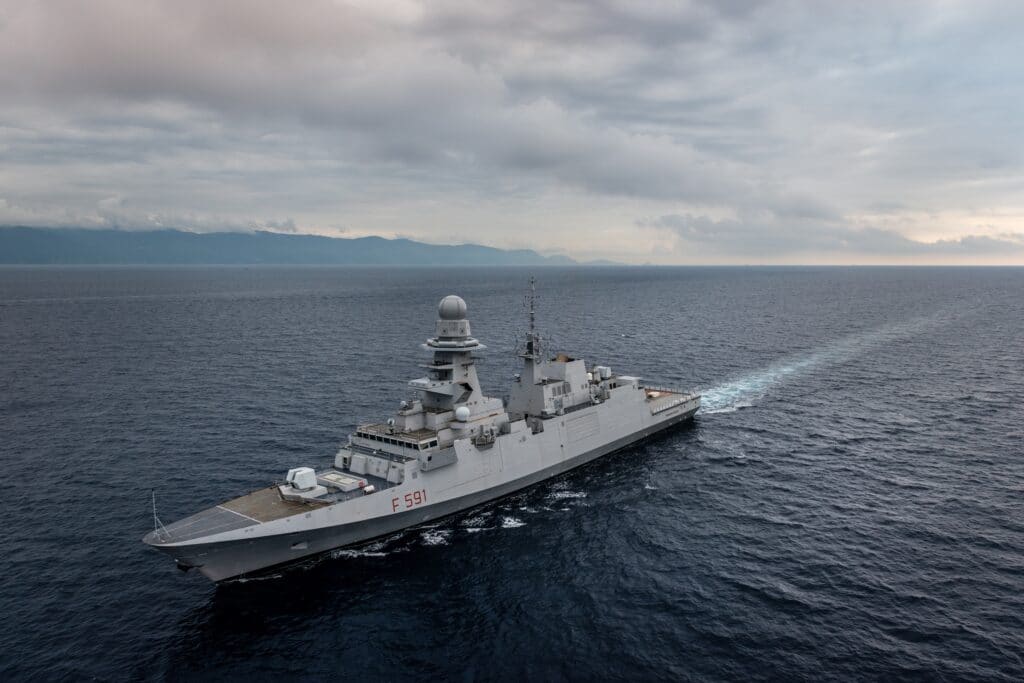14 Juli 2017
RMAF MiG-29N fighter (photo : Weimeng)
KUALA LUMPUR (Reuters) – Malaysia has put on hold a $2 billion plan to replace its aging fleet of combat aircraft, looking instead to upgrade its aerial surveillance capabilities to confront the growing threat of militancy inspired by the Islamic State group, a source with knowledge of the matter said.
Southeast Asia’s third-largest economy has for several years been weighing the competing merits of France’s Rafale jet and the Eurofighter Typhoon, built by Britain’s BAE Systems, as it looks to buy up to 18 jets to replace its Russian MiG-29 fighters – nearly half of which are grounded.
The Rafale fighter – built by Dassault Aviation SA – was until recently seen as the frontrunner, with the support of key officials in Malaysia’s defense ministry.
But Malaysia has shelved those plans for now as it looks to boost aerial surveillance that will be critical in its fight against militancy, a defense ministry source told Reuters.
The decision comes as Islamist fighters continue to battle security forces in Marawi in the southern Philippines. Malaysia and Indonesia, which share the nearby island of Borneo, are working with the Philippines to conduct air and maritime patrols along their shared borders in the Sulu Sea.
“With regards to Rafale, France is still pushing for it as evidenced during the recent air show in Paris,” said the source, on condition of anonymity as he was not authorized to speak to media on the discussions.
“However, due to the current situation, Malaysia is focusing more on maritime patrol aircraft rather than multi-role combat aircraft.”
More than 400 people have been killed in fighting in Marawi, on the Philippine island of Mindanao, which was seized by pro-Islamic State militants on May 23.
The crisis in Marawi has unnerved governments across Southeast Asia, worried the region could potentially become the next base for the Islamic State, especially with fighters returning home from Iraq after the fall of the group’s Mosul stronghold.
Besides conducting joint patrols, the Philippines, Indonesia and Malaysia have also agreed to pool intelligence and tackle militant financing.
Temporarily Suspended
Discussions for fighter jet procurements typically take years and an impending general election, which must be called by June 2018 but is expected this year, was already expected to delay Malaysia’s final decision.
The source said Malaysia’s jet fighter talks were only “temporarily suspended” and could resume in the future, but the priority was to secure new surveillance planes by 2020.
Malaysia’s decision to suspend its jet fighter acquisition program will come as a blow to Dassault’s Rafale and the Eurofighter Typhoon, the two main competitors for the deal to replace the Royal Malaysian Air Force’s (RMAF) squadron of Russian MiG-29s.
Spokesmen for Dassault and Eurofighter, a consortium including Airbus BAE Systems and Leonardo of Italy, declined to comment. BAE Systems did not immediately respond to a request for comment.
Prime Minister Najib Razak said in March that the Rafale deal was discussed during then French President Francois Hollande’s visit to the Southeast Asian nation, but that Malaysia was “not ready yet to make a decision”.
Dassault was awarded a contract in September last year to deliver 36 Rafale jets to India, and hopes to make additional sales to New Delhi.
Dassault Chief Executive Eric Trappier said in May that the company was “notably in talks” with Malaysia and India to secure one new contract by 2018.
BAE Systems, which leads the regional sales campaign for the Typhoon, is looking to kick off its entry into Southeast Asia with the sale of its multi-role combat aircraft to Malaysia.
Malaysia has four Beechcraft BT200T surveillance aircraft, but one of the planes crashed in December killing the pilot.
The defense ministry source said Kuala Lumpur was looking at acquiring four more surveillance planes that were larger and had a longer range than its existing assets, such as aircraft built by Lockheed Martin.
“We’re looking at a commercial-based platform, which is more affordable, compared to a military specific platform,” the source said.
(Reuters)
